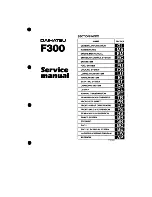
Service and Maintenance
. . . 334
Sensors, located on each wheel,
except the spare tire and wheel
assembly, transmit tire pressure
readings to a receiver in the
vehicle.
You may use the Driver Informa-
tion Center to monitor the
inflation pressures of your vehicle's
tires. See "Driver Information
Center" in Section 1.
If the system detects low tire
pressure in one or more of the
tires, the low tire pressure warning
light will appear and
TIRE LOW
ADD AIR TO TIRE
will be
displayed on the Driver Informa-
tion Center.
See the following in Section 1 for
more information:
• Low Tire Pressure Light
• Driver Information Center
Messages
-
TIRE LOW ADD AIR TO TIRE
(tire low add air to tire)
If you get the low tire pressure
warning, stop as soon as possible,
check all the tires for damage
and inflate them to the proper
pressure.
The low tire pressure warning
light and/or the
TIRE LOW ADD
AIR TO TIRE
message will appear
at each ignition cycle until the
low tire pressure condition is
corrected.
Driving on a significantly under-
inflated tire causes the tire to over-
heat and can lead to tire failure.
Under-inflation also reduces fuel
efficiency, tire tread life, and may
affect the handling and stopping
ability of the vehicle.
Check your tires at least once a
month. Don't forget your spare
tire.
See the tire information label
for your vehicle's tire inflation
specifications.
To determine the location of your
vehicle's tire information label, see
"Vehicle Loading" in Section 3.
If you replace the original tires
on your vehicle with tires of a
different size, the pressure listed
on the tire information label
may not be correct. Be sure to
determine the correct tire pressure
for the size of the tires on your
vehicle.
Make sure the replacement tire is
compatible with your tire pressure
monitoring system. If not, the
system may give inaccurate low
pressure warnings.
$10araEscaladeEXT Page 334 Wednesday, October 14, 2009 9:54 AM
















































